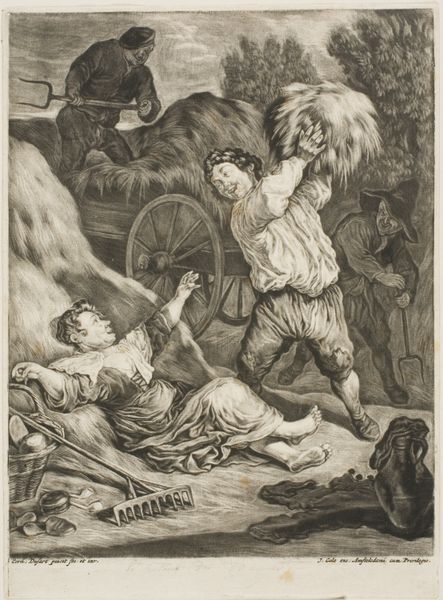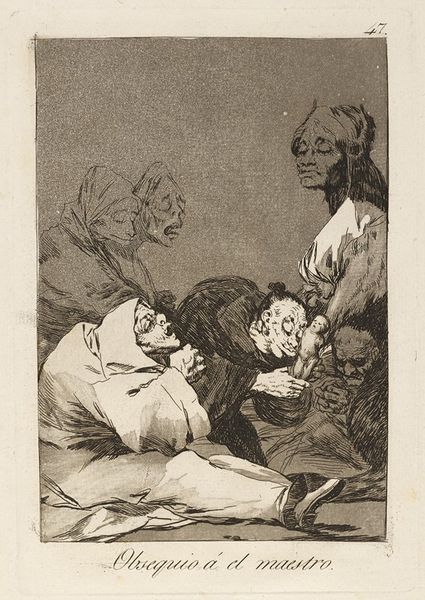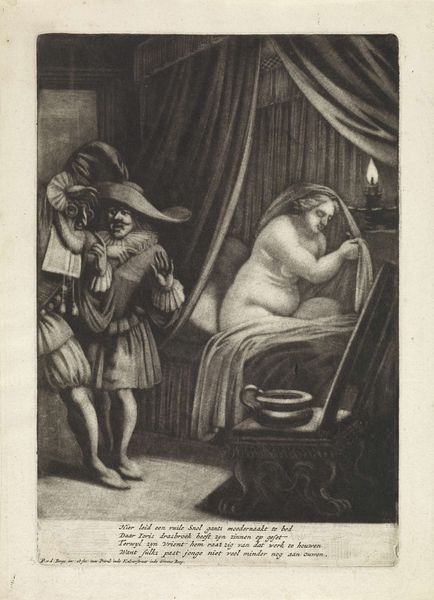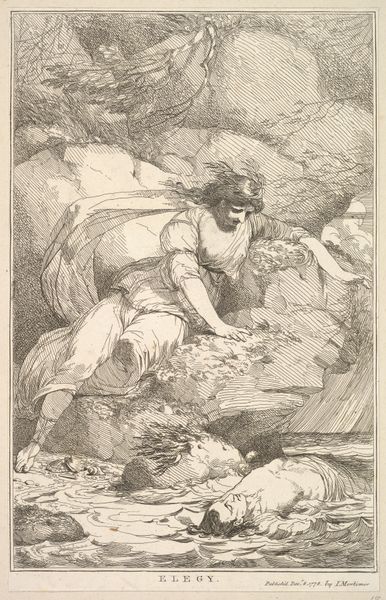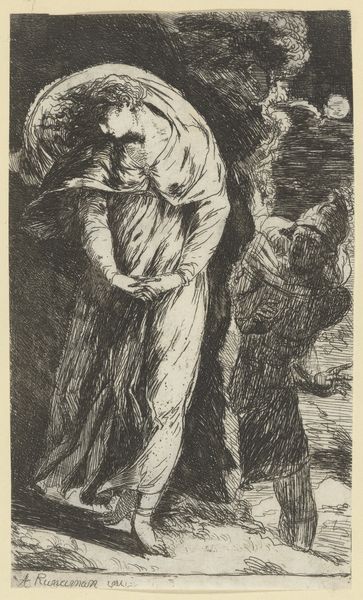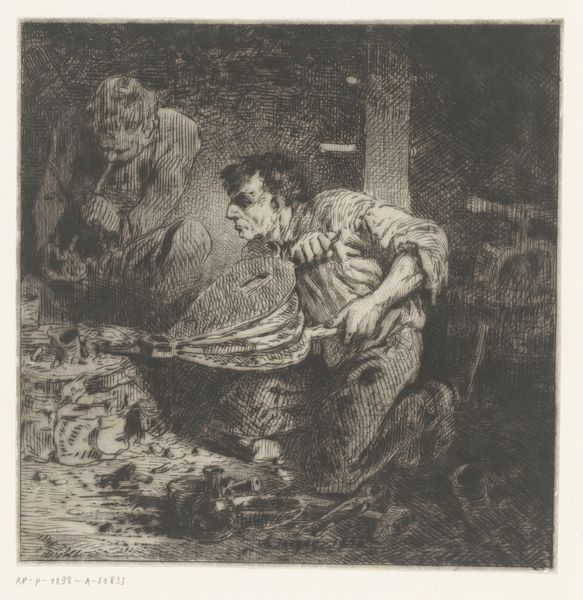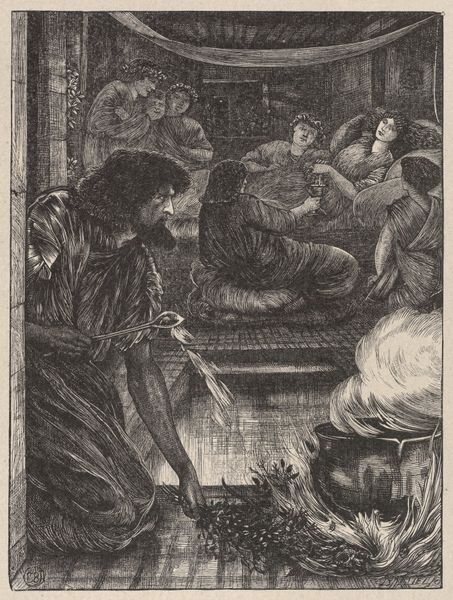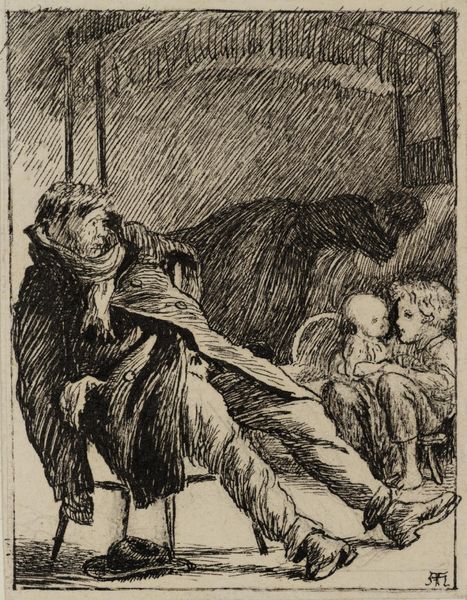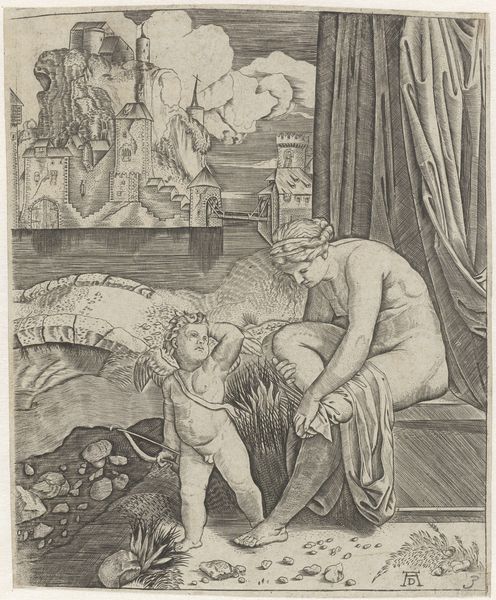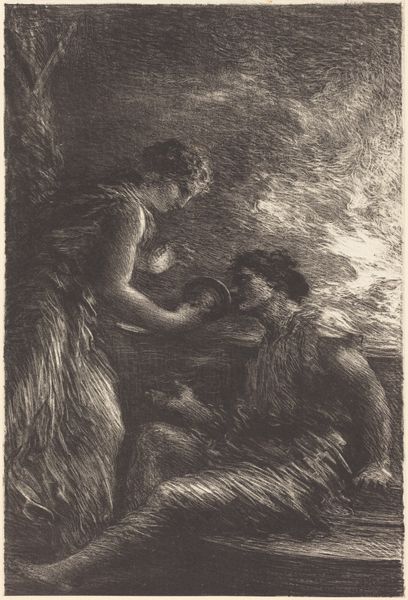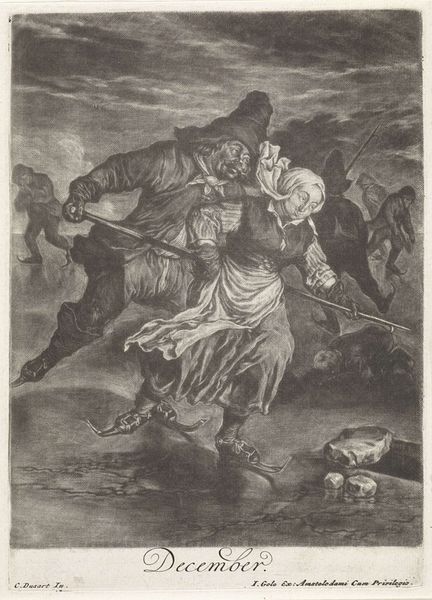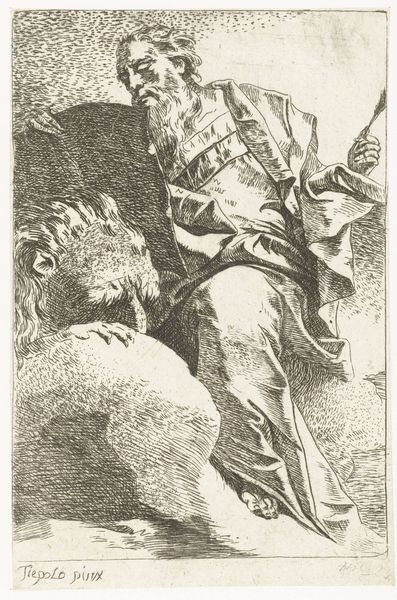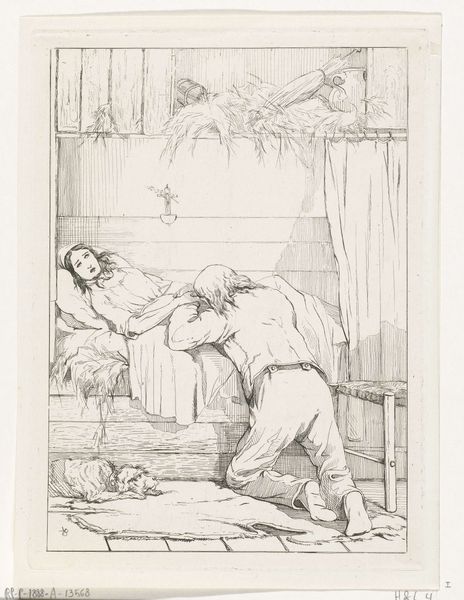
drawing, etching
#
drawing
#
dutch-golden-age
#
etching
#
figuration
#
genre-painting
#
history-painting
Dimensions: height 216 mm, width 154 mm
Copyright: Rijks Museum: Open Domain
This etching, Juli, was created around 1700 by Cornelis Dusart, and presents a boisterous scene of peasant life. The most striking image is the large bundle of wheat, wielded high above the central figure’s head. Wheat, from antiquity to today, symbolizes fertility, harvest, and prosperity, deeply embedded in agrarian societies’ rituals and hopes. This motif transcends cultures. We see echoes of it in ancient Egyptian harvest festivals, where sheaves of grain were central to celebrations of life and renewal. Consider the classical cornucopia, overflowing with the earth’s bounty. Yet, here, Dusart twists this symbol, turning it into a playful weapon in a rustic brawl, reflecting a primal aspect of human behavior. The image connects to our collective memory, evoking both abundance and disorder. It reminds us that symbols are never static but constantly reinterpreted, their meanings shifting with time and context, engaging viewers on a subconscious level.
Comments
No comments
Be the first to comment and join the conversation on the ultimate creative platform.
